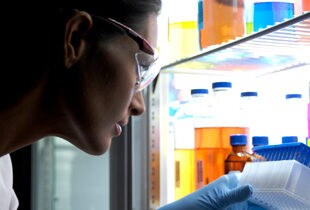What can help you save time and reduce costs for your next gen sequencing workflow? Stay tuned to find out.
The unprecedented high throughput of next gen sequencing or NGS instruments is helping drive down the cost of sequencing, making it accessible to large commercial and small research labs, alike. One way to take full advantage of high throughput NGS is sample multiplexing. Multiplex sequencing allows users to sequence more than one sample on the same sequencing run, reducing your cost per sample. Well, this sounds great. But, you may be asking yourself, how does it work? How many samples can I fit on my sequencing run?
Let’s take a look at our lab book.
During library preparation, barcodes or index sequences are added to the DNA or RNA libraries to be sequenced. Each sample will have a unique barcode sequence that allows the software to identify and group the sequencing reads from each sample. So how does one calculate how many samples to multiplex on a sequencing run? There are three main things we need to know to get started:
1- the throughput ability of the sequencing platform.
2- the amount of sequencing coverage one would desire per sample
And, 3- the size of the genome or genomic regions to be sequenced.
We can then use the simple equation, sequencer throughput divided by sequencing coverage, multiplied by the size of the genomic targets, to estimate the number of samples we can multiplex.
For targeted sequencing applications, we can think about the calculation slightly different in terms of reads per sample. Since we know the number of amplicons in a targeted sequencing panel, let’s say 120 amplicons for example, we can use this metric, instead of genomic target size. To estimate the number of samples we can multiplex, we can modify the equation to be: sequencer throughput divided by sequencing coverage multiplied by the number of target amplicons.
You may now be asking yourself, well how do I know how much sequencing coverage I need? Well, it all depends on your application. For the sake of time, we’ll focus on the common application of mutation detection. Somatic mutation detection generally requires more sequencing coverage than germline mutation detection. This is due to the frequency of the mutations. Mutation frequency can vary widely for somatic mutations, down to fractions of a percent. While, germline mutation frequency is either 50% or 100%. The lower the mutation frequency, the more sequencing coverage is generally required. In general, about 500x minimum coverage is recommended for somatic mutation detection and 30x minimum coverage for germline mutation detection.
Multiplex sequencing is a great way to save time and money while taking advantage of the ever-increasing throughput of NGS sequencers. Hopefully the question of “How many samples can I fit on my run?” now seems a little less daunting.
If you have more questions on multiplex sequencing, submit them at thermofisher.com/ask and subscribe to our channel to see more videos like this.
And remember, when in doubt, just Seq It Out



Leave a Reply